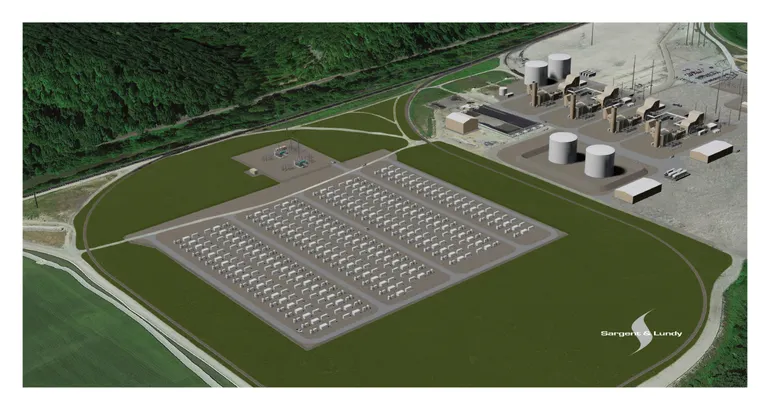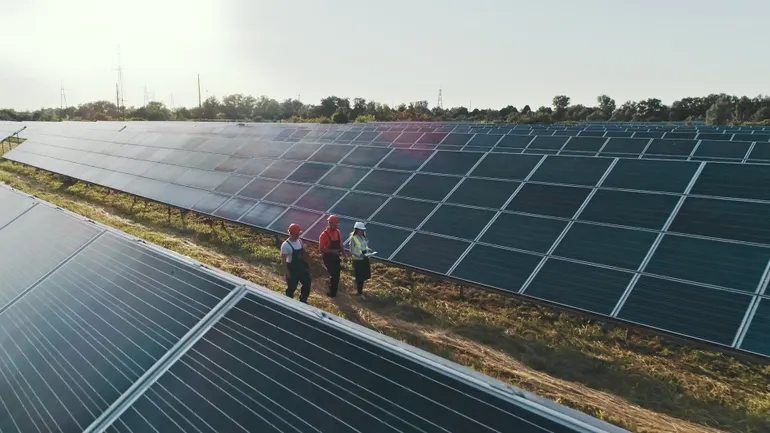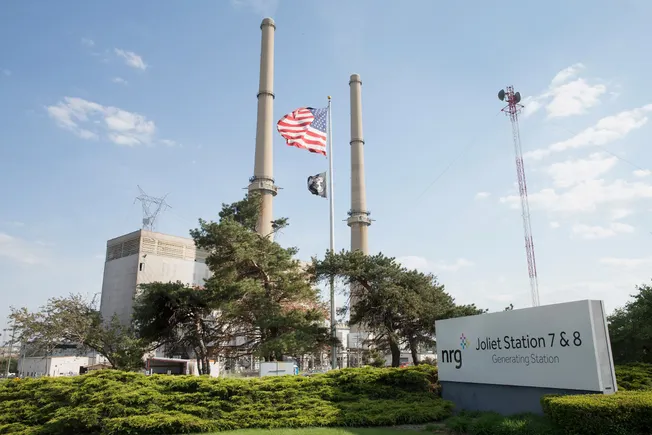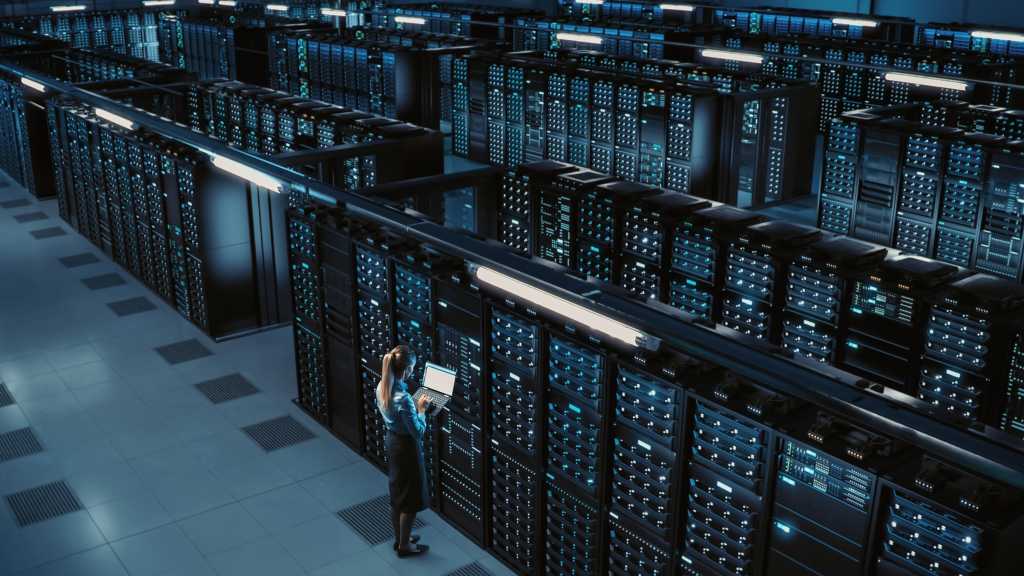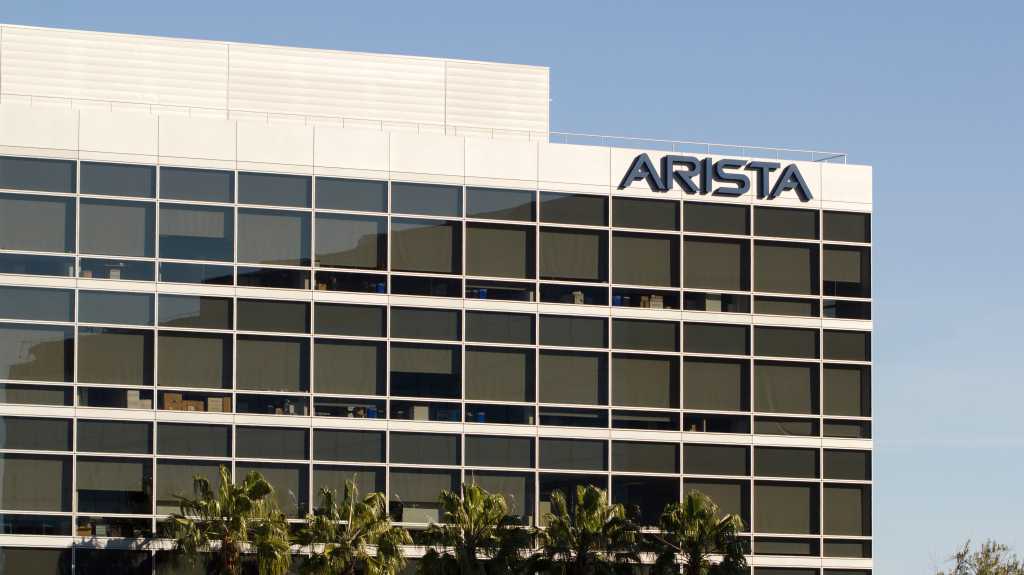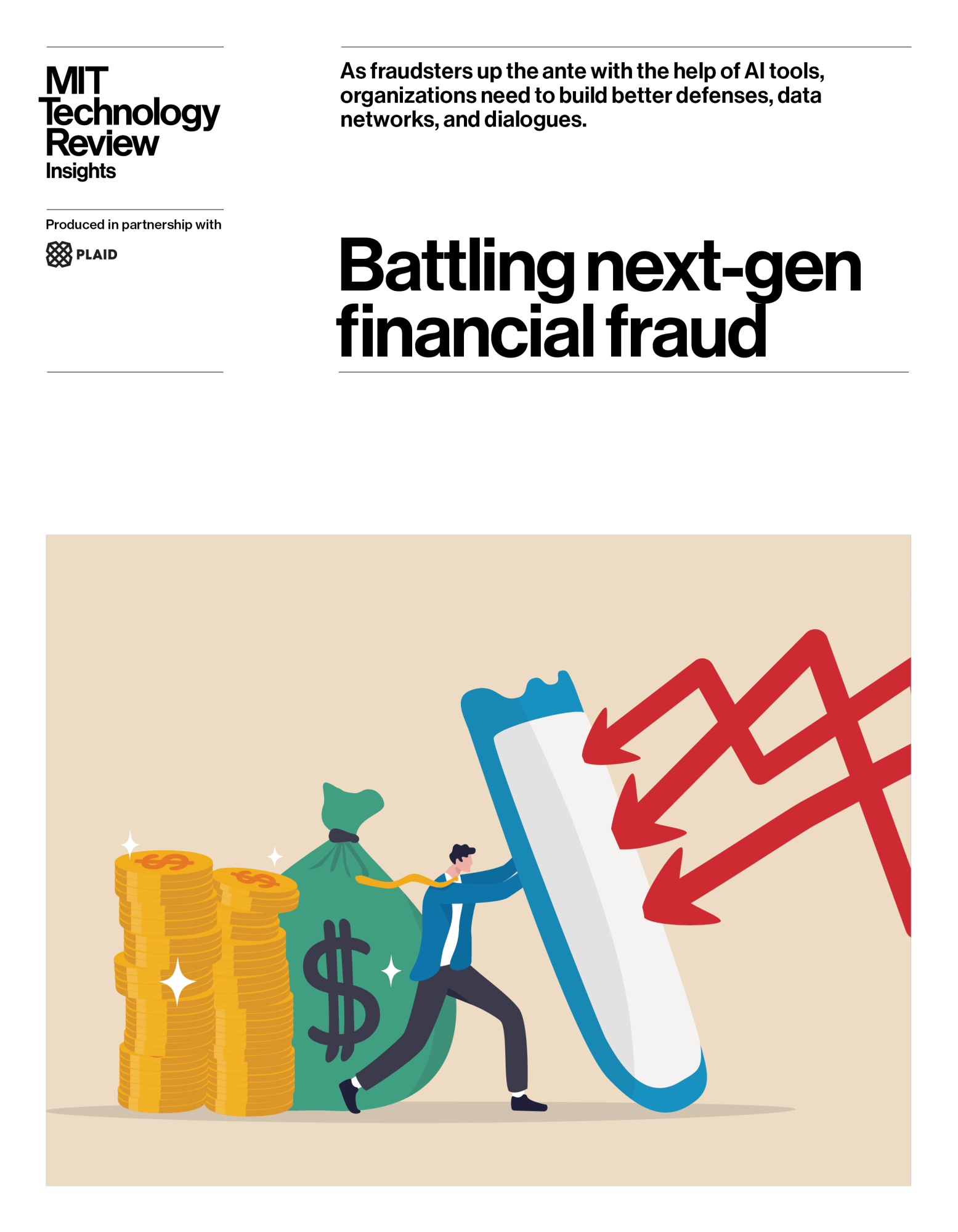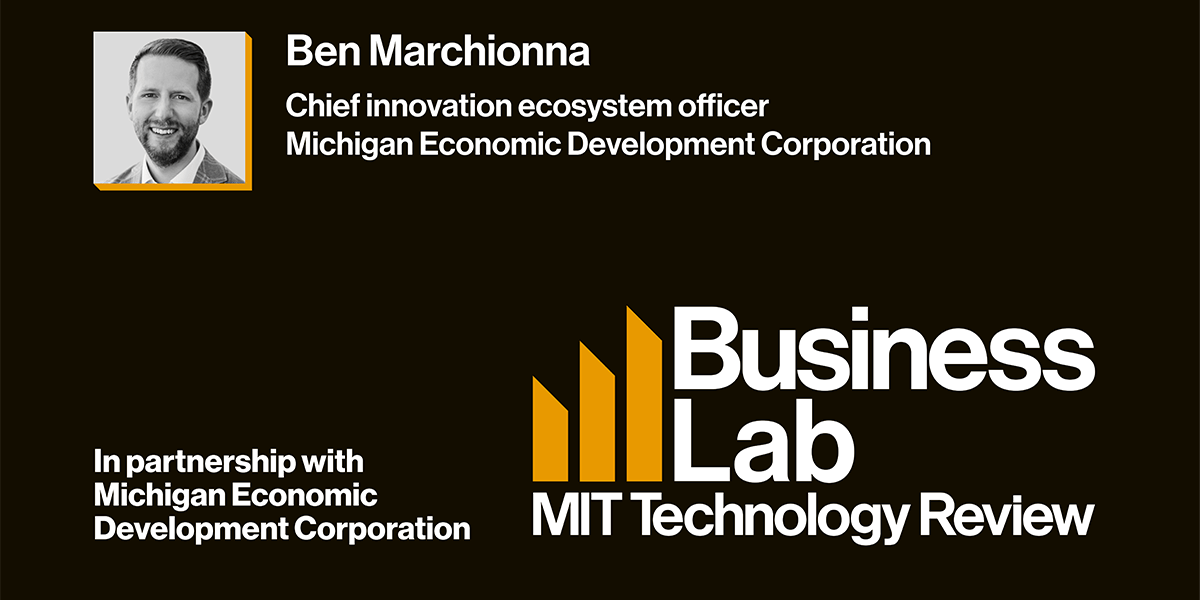
In partnership withMichigan Economic Development Corporation
Michigan may be best known as the birthplace of the American auto industry, but its innovation legacy runs far deeper, and its future is poised to be even broader. From creating the world’s largest airport factory during World War II at Willow Run to establishing the first successful polio vaccine trials in Ann Arbor to the invention of the snowboard in Muskegon, Michigan has a long history of turning innovation into lasting impact.
Now, with the creation of a new role, chief innovation ecosystem officer, at the Michigan Economic Development Corporation (MEDC), the state is doubling down on its ambition to become a modern engine of innovation, one that is both rooted in its industrial past and designed for the evolving demands of the 21st century economy.
“How do you knit together risk capital founders, businesses, universities, and state government, all of the key stakeholders that need to be at the table together to build a more effective innovation ecosystem?” asks Ben Marchionna, the first to hold this groundbreaking new position.
Leaning on his background in hard tech startups and national security, Marchionna aims to bring a “builder’s thinking” to the state government. “I’m sort of wired for that—rapid prototyping, iterating, scaling, and driving that muscle into the state government ecosystem,” he explains.
But these efforts aren’t about creating a copycat Silicon Valley. Michigan’s approach is uniquely its own. “We want to develop the thing that makes the most sense for the ingredients that Michigan can bring to bear to this challenge,” says Marchionna.
This includes cultivating both mom-and-pop businesses and tech unicorns, while tapping into the state’s talent, research, and manufacturing DNA.
In an era where economic development often feels siloed, partisan, and reactive, Michigan is experimenting with a model centered on long-term value and community-oriented innovation. “You can lead by example in a lot of these ways, and that flywheel really can get going in a beautiful way when you step out of the prescriptive innovation culture mindset,” says Marchionna.
This episode of Business Lab is produced in partnership with the Michigan Economic Development Corporation.
Full Transcript
Megan Tatum: From MIT Technology Review. I’m Megan Tatum, and this is Business Lab, the show that helps business leaders make sense of new technologies coming out of the lab and into the marketplace.
Today’s episode is brought to you in partnership with the Michigan Economic Development Corporation.
Our topic today is building a statewide innovation economy. Now, the U.S. state of Michigan has long been recognized as a leader in vehicle and mobility innovation. Detroit put it on the map, but did you know it’s also the birthplace of the snowboard or that the University of Michigan filed more than 600 invention disclosures in 2024, second only to the Massachusetts Institute of Technology, or that in the past five years, 40% of the largest global IPOs have been Michigan built companies?
Two words for you: innovation ecosystem.
My guest is Ben Marchionna, chief innovation ecosystem officer at the Michigan Economic Development Corporation, the MEDC.
Ben, thank you ever so much for joining us.
Ben Marchionna: Thanks, Megan. Really pleased to be here.
Megan: Fantastic. And just to set some context to get us started, I wondered if we could take a kind of high-level look at the economic development landscape. I mean, you joined the MEDC team last year as Michigan’s first chief innovation ecosystem officer. In fact, you were the first to hold such a role in the country, I believe. I wondered if you could talk a bit about your unique mission and how this economic development approach differs from efforts in other states.
Ben: Yeah, sure would love to. Probably worth pointing out that while I’ve been in this role for about a year now, it was indeed a first-of-its-kind role in the state of Michigan and first of its kind in the country. The slight difference in the terminology, chief innovation ecosystem officer, it differs a little bit from what folks might think of as a chief innovation officer. I’m not all that focused on driving innovation within government, which is what some other chief innovation officers would be focused on around the country. Instead, you can think of my role as Michigan’s chief architect for innovation, if you will. So, how do you knit together risk capital founders, businesses, universities, and state government, all of the key stakeholders that need to be at the table together to build a more effective innovation ecosystem? I talk a lot about building connective tissues that can achieve one plus one equals three outcomes.
Michigan’s got all kinds of really interesting ingredients and has the foundation to take advantage of the moment in a really interesting way over the next decades as we look to supercharge some of the growth of our innovation ecosystem development.
My charter is relatively simple. It’s to help make sure that Michigan wins in a now hyper-competitive global economy. And to do that, I end up being super focused on orienting us towards a growth and innovation-driven economy. That can mean a lot of different things, but I ultimately came to the MEDC and the role within the state with a builder’s mindset. My background is not in traditional economic development, it’s in not government at all. I spent the last 10 years building hard tech startups, one in Ann Arbor, Michigan, and another one in the Northern Virginia area. Before that, I spent a number of years at, think of it like, an innovation factory at Lockheed Martin Skunk Works in the Mojave Desert, working on national security projects.
I’m sort of wired for that, builder’s thinking, rapid prototyping, iterating, scaling, and driving that muscle into the state government ecosystem. I think it’s important that the government also figure out how to pull out all the stops and be able to move at the speed that founders expect. A bias towards action, if you will. And so this is ultimately what my mission is. There are a lot of real interesting things that the state of Michigan can bring to bear to building our innovation ecosystem. And I think, tackling it with this sort of a mindset, I am absolutely optimistic for the future that we’ve got ahead of us.
Megan: Fantastic. It almost sounds like your role is sort of building a statewide startup incubator of sorts. As we mentioned in the opening, Michigan actually has a really interesting innovation history even in addition to the advances in the automotive industry. I wondered if you could talk a bit more about that history and why Michigan, in particular, is poised to support that sort of statewide startup ecosystem.
Ben: Yeah, absolutely. And I would even broaden it. Building the startup ecosystem is one of the essential layers, but to be able to successfully do that, we have to bring in the research universities, we have to bring in the corporate innovation ecosystem, we have to bring in the risk capital, et cetera. So yes, absolutely, startups are important. And equally as important are all of these other elements that are necessary for a startup ecosystem to thrive, but are also the levers that are just sitting there waiting for us to pull them.
And we can get into some of the details over the course of our chat today on the auto industry and how this fits into it, but Michigan does a lot more than just automotive stuff. And you noted, I think, the surfboard as an example in the intro. Absolutely correct. We have a reputation as Motor City, but Michigan’s innovation record is a lot weirder in a fun way and richer than just cars.
Early 20th century, mostly industrial moonshot innovation. So first paved mile of concrete was in Detroit in 1909. A few years later, this is when the auto sector started to really come about with Henry Ford’s moving assembly line. Everyone tends to know about those details. But during World War II, Willow Run Airport sort of smack between Detroit and Ann Arbor, Michigan they had the biggest airplane factory in the world. They were cranking out B-24 bombers once every 63 minutes, and I’ve actually been to the office that Henry Ford and Charles Lindbergh shared. It’s still at the airport. And it was pretty cool because Henry Ford had a window built into the office that looked sort of around the corner so that he could tick off as airplanes rolled out of the hanger and make sure that they were following the same high rate production mentality that the auto sector was able to develop over the decades prior.
And so they came in to help make sure that you could leverage that industrial sector to drive very rapid production, the at-scale mentality, which is also a really important part of the notion of re-industrialization that is taking hold across the country now. Happy to get into that a bit, but yeah, Willow Run, I don’t think most folks realize that that was the biggest airplane factory in the world sitting right here in Michigan.
And all of this provided the mass production DNA that was able to help build the statewide supplier base. And today, yes, we use that for automotive, EVs, space hardware, batteries, you name it. But this is the foundation, I think, that we’ve got to be able to build on in the future. In the few decades since you saw innovations in sports, space, advanced materials, it’s like the sixties to the eighties. You said the snowboard. That was invented in Muskegon on the west side of the state in 1965.
Dow Chemical’s here in a really big way. They’ve pioneered silicone and advanced plastics in Michigan. University of Michigan’s Dr. Thomas Francis is the world’s first successful polio vaccine trials that were pioneered out of Ann Arbor, and that Big 10 research horsepower that we’ve got in the state, between the University of Michigan, Michigan State University. We also have Wayne State University in Detroit, which is a powerhouse. And then Michigan Tech University in the Upper Peninsula just recently became an R1 research institution, which essentially means those top-tier research powerhouses and that culture of tinkering matter a lot today.
I think in more recent history, you saw design and digital innovations emerge. I don’t think a lot of people appreciate that Herman Miller and Steelcase reinvented office ergonomics on the west side of the state, or that Stryker is based in Kalamazoo. They became a global medical device powerhouse over the last couple of decades, too. Michigan’s first unicorn, Duo Security, the two-factor authentication among many other things that they do there, was sold to Cisco in 2018 for 2.35 billion.
Like I said, the first unicorn in the few years since we’ve had another 10 unicorns. And I think probably what would be surprising to a lot of people is it’s in sectors well beyond mobility, it’s marketplace like StockX, FinTech, logistics, cybersecurity, of course. It’s a little bit of everything, and I think that goes to show that some of the fabric that exists within Michigan is a lot richer than what people think of, Motor City. We can scale software, we can scale life sciences innovation. It’s not just metal bending, and I talked about re-industrialization earlier. So I think about where we are today, there’s a hard tech renaissance and a broad portfolio of other high-growth sectors that Michigan’s poised to do really well in, leveraging all of that industrial base that has been around for the last century. I’m just super excited about the future and where we can take things from here.
Megan: I mean, genuinely, a really rich and diverse history of innovation that you’ve described there.
Ben: That’s right.
Megan: And last year, when Michigan’s Governor Whitmer announced this new initiative and your position, she noted the need to foster this sort of culture of innovation. And we hear that a lot that terminal in the context of company cultures. It’s interesting to hear in the context of a U.S. state’s economy. I wonder what your strategy is for building out this ecosystem, and how do you foster a state’s innovation culture?
Ben: Yeah, it’s an awesome point, and I think I mentioned earlier that I came into the role with this builder’s mentality. For me, this is how I am wired to think. This is how a lot of the companies and other founders that I spent a lot of time with, this is how they think. And so bringing this to the state government, I think of Blue Origin, Jeff Bezos’ space company, their motto, the English translation at least of it, is “Step by Step, Ferociously.” And I think about that as a lot as a proxy for how I do that within the state government. There’s a lot of iterative work that needs to happen, a lot of coaching and storytelling that happens to help folks understand how to think with that builder’s mindset. The wonderful news is that when you start having that conversation, this is one of those in these complicated political times, this is a pretty bipartisan thing, right?
The notion of how to build small businesses that create thriving main street communities while also supporting high-growth, high-tech startups that can drive prosperity for all, and population growth, while also being able to cover corporate innovation and technology transfer out of universities. All of these things touch every corner of the state.
And Michigan’s a surprisingly large and very geographically diverse state. Most of the things that we tend to be known for outside the state are in a pretty small corner of Southeast Michigan. That’s the Motor City part, but we do a lot and we have a lot of really interesting hubs for innovation and hubs for entrepreneurship, like I said, from the small mom-and-pop manufacturing shop or interest in clothing business all the way through to these insane life sciences innovations being spun out of the university. Being able to drive this culture of innovation ends up being applicable really across the board, and it just gets people really fired up when you start talking about this, fired up in a good way, which is, I think, what’s really fantastic.
There’s this notion of accelerating the talent flywheel and making sure that the state can invest in the cultivation of really rich communities and connections, and this founder culture. That stuff happens organically, generally, and when you talk about building startup ecosystems, it’s not like the state shows up and says, “Now you’re going to be more innovative and that works.” That is not the case.
And so to be able to develop those things, it’s much more about this notion of ecosystem building and getting the ingredients and puzzle pieces in the right place, applying a little bit of funding here and there, or loosening a restriction here or there, and then letting the founders do what they do best, which is build. And so this is what I think I end up being super passionate about within the state. You can lead by example in a lot of these ways, and that flywheel that I mentioned really can get going in a beautiful way when you step out of the prescriptive innovation culture mindset.
Megan: And given that role, I wonder what milestones the campaign has experienced in your first year? Could you share some highlights and some developing projects that you’re really excited about?
Ben: We had a recent one, I think that was pretty tremendous. Just a couple of months ago, Governor Whitmer signed into law a bipartisan legislation called the Michigan Innovation Fund. This was a multi-year effort that resulted in the state’s biggest investment in the innovation ecosystem development in over two decades. A lot of this funding is going to early stage venture capital firms that will be able to support the broad seeding of new companies and ideas, keep talent within the state from some of those top tier research institutions, bring in really high quality companies that early stage, growth stage companies from out of state, and then develop or supercharge some of that innovation ecosystem fabric that ties those things together. So that connective tissue that I talked about, and that was an incredible win to launch the year with.
This was just back in January, and now we’re working to get some of those funds out over the course of the next month or two so we can put them to use. What was really interesting about that was, it wasn’t just a top-down thing. This was supported from the top all the way up to and including Governor Whitmer. I mentioned bipartisan support within Michigan’s legislature and then bottom-up from all of the ecosystem partners, the founders, the investors advocating as a whole block, which I think is really powerful. Rather than trying to go for one-off things, this huge coalition of the willing got together organically and advocated for, hey, this is why this is such a great moment. This is the time to invest. And Governor Whitmer and the legislators, they heard that call, and we got something done, and so that happened relatively quickly. Like I said, biggest investment in the last two decades, and I think we’re poised to have some really great successes in the coming year as well.
Another really interesting one that I haven’t seen other states do yet, Governor Whitmer, around a year ago, signed an executive order called the Infrastructure for Innovation. Essentially, what that does is it opens up state department and agency assets to startups in the name of moving the ball forward on innovation projects. And so if you’re a startup and you need access to some very hard-to-find, very expensive, maybe like a test facility, you can use something that the state has, and all of the processes to get that done are streamlined so that you’re not beating your head against a wall. Similarly, the universities and even federal labs and corporate resources, while an executive order can’t compel those folks to do that, we’ve been finding tremendous buy-in from those stakeholders who want to volunteer access to their resources.
That does a lot of really good things, certainly for the founders, that provides them the launchpad that they need. But for those corporations and universities, and whatnot, a lot of them have these very expensive assets sitting around wildly underutilized, and they would be happy to have people come in and use them. That also gives them exposure to some of the bleeding-edge technology that a lot of these startups today are developing. I thought that was a really cool example of state government leadership using some of the tools that are available to a governor to get things moving. We’ve had a lot of early wins with startups here that have been able to leverage what that executive order was able to do for them.
Here we are talking about the MIT Technology Review to tie in an MIT piece here, we also started a Team Michigan for MIT’s REAP program. It’s the Regional Entrepreneurship Acceleration Program, and this is one of the global thought leaders on best practices for innovation ecosystem development. And so we’ve got a cohort of about a dozen key leaders from across all of those different stakeholders who need to have a seat at the table for this ecosystem development.
We go out to Cambridge twice a year for a multi-day workshop, and we get to talk about what we’ve learned as best practices, and then also learn from other cohorts from around the world on what they’ve done that is great. And then also get to hear some of the academic best practices that the MIT faculty have discovered as part of this area of expertise. And so that’s been a very interesting way for us to be able to connect outside of the state government boundaries, if you will. You sort of get out there and see where the leading edge is and then come back and be able to talk about the things that we learned from all of these other global cohorts. So always important to be focused on best practices when you’re trying to do new things, especially in government.
Megan: Sounds like there are some really fantastic initiatives going on. It sounds like a very busy first year.
Ben: It’s been a very busy first year couldn’t be more thrilled about it.
Megan: Fantastic. And in early 2023, I know that Newlab partnered with Michigan Central to establish a startup incubator too, which brought in more than a hundred startups just in its first 14 months. I wonder if you could talk a bit about how the incubator fits in with the statewide startup ecosystem and the importance of partnerships, too, for innovation.
Ben: Yeah, a key element, and I think the partnerships piece is essential here. Newlab is one of the larger components of the Southeast Michigan and especially the Detroit innovation ecosystem development. They will hit their two-year launch anniversary in just a couple of weeks, here I think. This will be mid-May, it will be two years and in that time, they’ve now got 140 plus startups all working out of their space, and Newlab they’re actually headquartered in Brooklyn, New York, but they run this big startup accelerator incubator out of Detroit as well and so this is sort of their second flagship location. They’ve been a phenomenal partner, and so speaking of the partnerships, what do those do?
They de-risk the technologies to help enable broader adoptions. Corporations can provide early revenues, the state can provide non-dilutive grant matching. Universities can bring IP and this renewable source of talent generation, and being able to stitch together all of those pieces can create some really interesting unlocks for startups to grow. But again, also this broader entrepreneurship and innovation ecosystem to really be able to thrive.
Newlab has been thrilled with their partnership in Southeast Michigan, and I think it’s a model that can be tailored across the state so that, depending on what assets are available in your backyard, you can make sure that you can best harness those for future growth.
Megan: Fantastic. What’s the long-term vision for the state’s innovation landscape when you think about it in five, 10 years from now? What do you envisage?
Ben: Amazing question. This is probably what I get most excited about. I think earlier we talked about the Willow Run B-24 bomber plant. That is what made Michigan known as the arsenal of democracy back in the day. I want Michigan to be the arsenal of innovation. We’re not trying to recreate a Silicon Valley. Silicon Valley does certain things, not trying to recreate what El Segundo wants to do in hard tech or New York City in FinTech, and all of these other things. We want to develop the thing that makes the most sense for the ingredients that Michigan can bring to bear to this challenge.
I think that becoming the Midwest arsenal of innovation, that’s something that Michigan is very well poised to use as a springboard for the decades to come. I want us to be the default launch pad for building a hard tech company, a life sciences company, an agricultural tech company. You name it. If you’ve got a design prototype and want to mass produce something, don’t want to hop coast, you want to be somewhere that has a tremendous quality of life, an affordable place, somewhere that government is at the table and willing to move fast, this is a place to do that.
That can be difficult to do in some of the more established ecosystems, especially post-covid, as a lot of them are going through really big transition periods. Michigan’s already a top 10 state for business in the next 10 years. I want us to be a top 10 state for employment, top 10 state for household median income for post-secondary education attainment, and net talent migration. Those are my four top tens that I want to see in the next 10 years. And we covered a lot of topics today, but I think those are the reasons that I am super optimistic about being able to accomplish those.
Megan: Fantastic. Well, I’m tempted to move to Michigan, so I’m sure plenty of other people will be now, too. Thank you so much, Ben. That was really fascinating.
Ben: Thanks, Megan. Really delighted to be here.
Megan: That was Ben Marchionna, chief innovation ecosystem officer at the Michigan Economic Development Corporation, whom I spoke with from Brighton, England.
That’s it for this episode of Business Lab. I’m your host, Megan Tatum. I’m a contributing editor and host for Insights, the custom publishing division of MIT Technology Review. We were founded in 1899 at the Massachusetts Institute of Technology, and you can find us in print on the web and at events each year around the world. For more information about us and the show, please check out our website at technologyreview.com.
This show is available wherever you get your podcasts, and if you enjoy this episode, we hope you’ll take a moment to rate and review us. Business Lab is a production of MIT Technology Review. This episode was produced by Giro Studios. Thanks ever so much for listening.
This content was produced by Insights, the custom content arm of MIT Technology Review. It was not written by MIT Technology Review’s editorial staff.
This content was researched, designed, and written entirely by human writers, editors, analysts, and illustrators. This includes the writing of surveys and collection of data for surveys. AI tools that may have been used were limited to secondary production processes that passed thorough human review.





